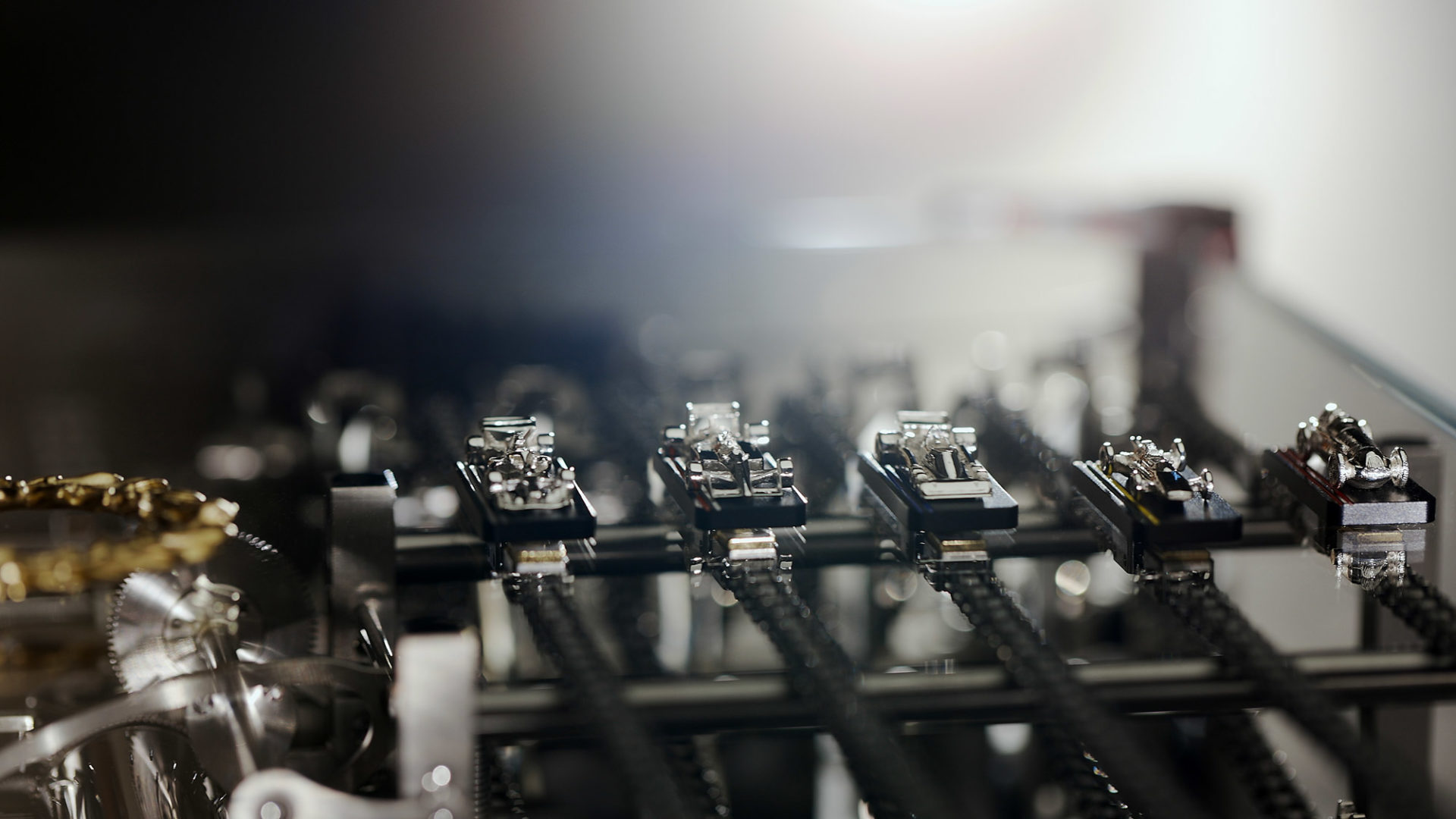
Racing Legends
By presenting “Racing Legends”, REUGE pays tribute to eight decades of Formula 1 and the dazzling innovations that have marked this discipline since 1950. The brand selected five of the most iconic F1 cars over time and placed them next to each other on the starting line, like an anachronistic race of legends that every F1 lover would dream of.
Racing Legends
By presenting “Racing Legends”, REUGE pays tribute to eight decades of Formula 1 and the dazzling innovations that have marked this discipline since 1950. The brand selected five of the most iconic F1 cars over time and placed them next to each other on the starting line, like an anachronistic race of legends that every F1 lover would dream of.
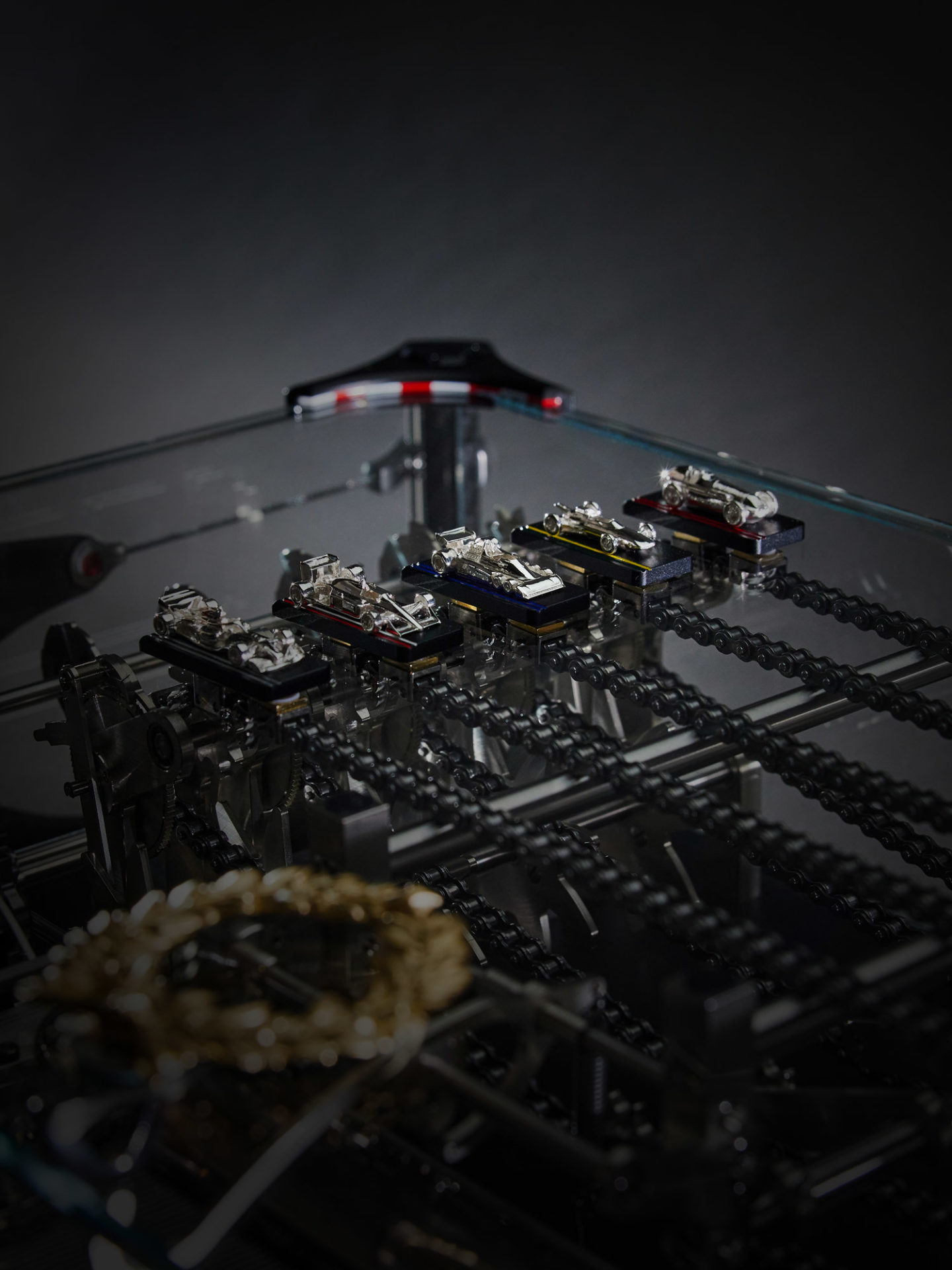

1950s
The rise of F1
The year 1950 marks the official debut of the Formula 1 World Championship. On May 13th 1950, King George VI and Queen Elizabeth attend the Grand Prix of Great Britain in Silverstone.
At this period, Italian constructors reign supreme in the world of F 1. Alfa Romeo, Ferrari and Maserati are without equal in the automotive world. The Italian Giuseppe Farina wins the 1st championship title in 1950, followed by the Argentinean Juan Manuel Fangio, who wins 5 world championship titles in a row between 1951 and 1957.
At this time, it takes stamina and endurance to win a Grand Prix. The races are almost 500 km long and they are more about survival skills than speed.
Anecdote
In 1950, at the beginning of the world championship, the helmet is optional. Many pilots prefer to wear linen headgear.
Alberto Ascari
Giuseppe Farina
Alpha Romeo
Maserati
Main innovation: In 1958, the Cooper Car Company reveals a car with a rear engine. This world first revolutionizes the way cars are built forever.

Jack Brabham
Graham Hill
Ferrari
Brabham
Main innovation: Lotus, the dominant team of the decade, raises the technical standards of F1 with its new monocoque chassis, lighter and stronger than before.
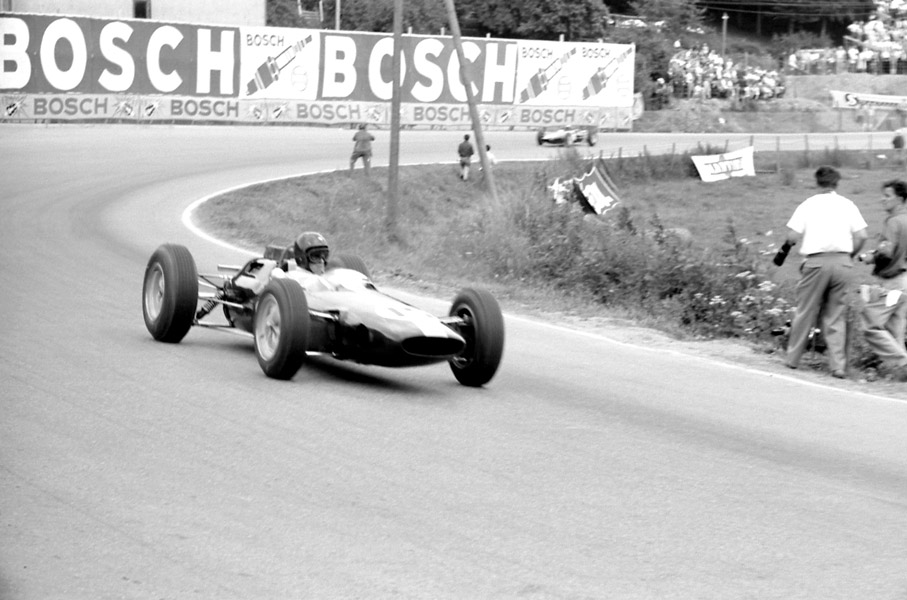
1960s
The era of changes
At the beginning of the 60s, the FIA decides to reduce the power of the engines, the single-seaters being considered too fast. In 1961 the engines are downsized to 1.5 liters.
These new rules incite the racing teams to be even more ingenious and creative. A period of relentless experimentation begins. Cars evolve greatly during the racing season. In fact, a car at the end of the season is often quite different from its version a few months prior.
The Italians may have dominated F1 in the 50s but the English definitely took over in the 60s. Team Lotus is the dominant team of the decade. Lotus makes the most of the new rear engine and develops a high-performance chassis (stronger and lighter).
Although the engines are less powerful in the early 60's, accidents are still a bitter reality on the circuit. Faced with the inefficiency of small engines in terms of safety, the FIA decides to return to more power. In 1966 the 3 liter engines are back in play.
Anecdote
The Englishman John Surtees wins the championship in 1964. He is the only man to this day, to have won a world championship on two and four wheels (he holds 7 motorcycle world championship titles).
1970s
The crazy years
The 1970s are exhilarating years for F1. Engines become more reliable and manufacturers concentrate on other technical aspects. With the advent of ailerons at the very end of the 1960s, the following years are marked by the development of aerodynamics. This period gave rise to some very unusual designs, such as the Tyrell P34 with its 6 wheels or the Brabham BT46B, also known as the “fan car”.
The 1970s also stand out for the increasing development of sponsors in the world of F1. Some cars like the Lotus even abandon their traditional colors to adopt the colors of their sponsors. Branded hospitality tents start popping up at the back of the racecourse. This is made possible by more lenient rules.
Anecdote
With a 14-second lead going into the final lap of the 1970 British GP, Jack Brabham thought he had won. Sadly, his engine ran out of fuel on the last lap. He still had enough momentum to cross the finish line but ended up on the second step of the podium.
Emerson Fittipaldi
Jackie Stewart
Ferrari
Main innovation: Aerodynamics is at the heart of innovations in the 1970s. Ailerons are introduced at the end of the 1960s, but the 1970s develop this invention further thanks to discoveries on ground effect. The car’s entire bodywork becomes an aileron.

Alain Prost
Nelson Piquet
Williams
Main innovation: In 1977, Renault used a turbo engine for the first time. Although this technology was considered impractical and complex (even mocked) by competitors in 1977, it quickly became coveted and then widespread. In 1981, the supremacy of the turbo was undeniable.

1980s
The advent of spectator sport
Formula 1 is a real craze in the 80s, especially from 1985 onwards. The fascination around it is helped by a growing media coverage.
This gain in popularity is closely linked to the amazing show that this decade offers. The 80's is the story of a double rivalry : a rivalry between constructors (Williams vs McLaren ) but also between two pilots, who became superstars, the French Alain Prost and the Brazilian Ayrton Senna.
The 80's also stands out for its overpowered engines, thanks in particular to the introduction of the turbo. Pilots need to adapt constantly between engines with maximum performance, used for the tests, and engines with more limited power, to finish the races.
The 80's are considered by many fans as the most exciting decade in the history of F1.
Anecdote
The McLaren MP4/4 is considered by many to be the most competitive car of all time in F1. With 15 victories, as many pole positions and 25 podiums in only 16 Grand Prix in 1988, it has certainly left its mark.
Nowadays
Electronics and security
Electronics is omnipresent nowadays and cars rely on it for every second. New driving assistance technologies are gradually developed, such as ABS (anti-lock braking system), ASR (anti-skidding system) and ESP (electronic stability program for more stability in curves).
These technologies also aim to improve the pilots’ safety. The halo, introduced in 2018 is another important safety feature. Much criticized at the onset, the halo has shown its effectiveness on several occasions, saving many lives.
The colossal sums invested by certain teams in recent years are also worth noting: up to 500 million dollars per season. Faced with these exorbitant amounts, the FIA put a ceiling into place.
Anecdote
Colombian Juan Pablo Montoya holds the track speed record for driving a Formula 1 car at 372.6 km/h. This record was set during private testing in August 2005 at the Monza track in Italy.
Max Verstappen
Charles Leclerc
Red Bull
Ferrari
Main innovation: The engines go "green". A change of engine formula occurs in 2014. The 2.4L V8s are replaced by 1.6L V6s, with a real energy recovery system, in line with the worldwide concern of energy conservation.
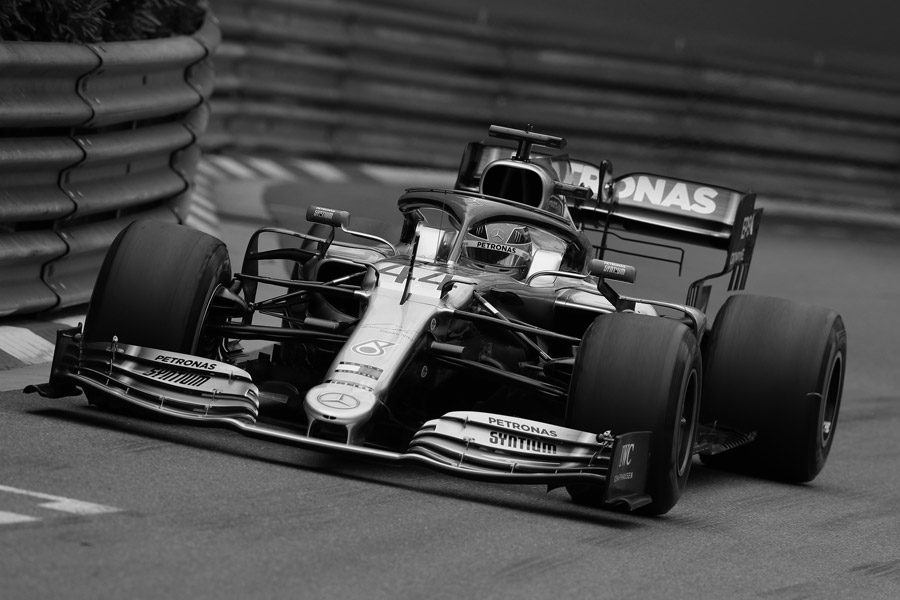
RACING LEGENDS
Music automaton
The “Racing Legends” automaton is both an animated spectacle and an acoustic experience, combining the gripping motion of a race for victory with the pure resonance of music. It's a journey through time that traces the evolution of the automobile from the sleek purity of the first race vehicles to the technical prowess of today's F1 cars.
Racing Legends embodies REUGE’s creativity and know-how. The automaton brings an epic race back to life; the music consecrates the victory. Behind the Brand’s mystical quest for a genuine sonority and a creative motion, lies a desire to transcend an experience. Music and movement are a sensory engagement: when played right, when timed just so, they have the power to take us on a journey through time so that we relive emotions we thought were hidden.
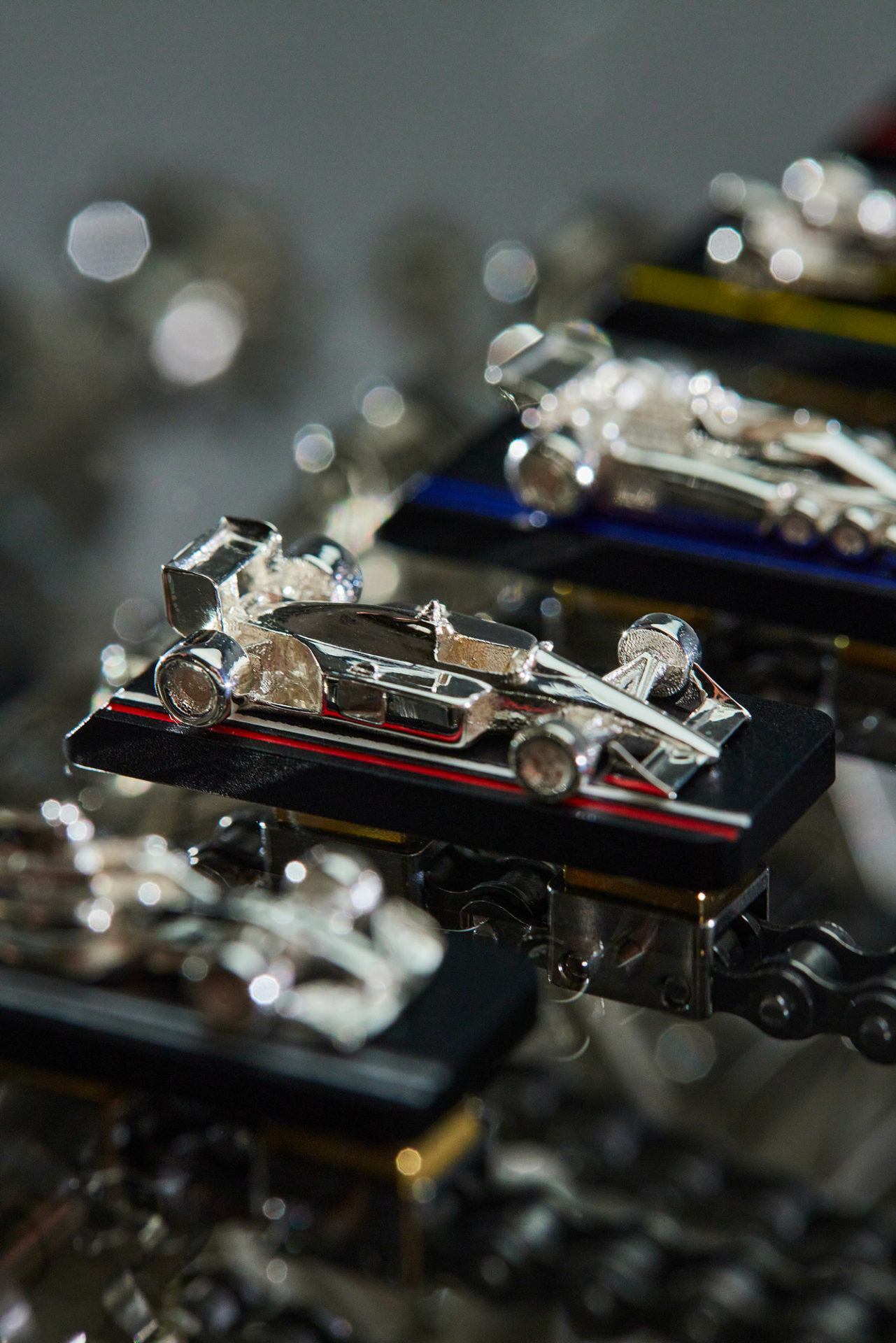



Racing Legends brings an epic race back to life; the music consecrates the victory. Behind REUGE’s mystical quest for a genuine sonority and a creative motion, lies a desire to transcend an experience.